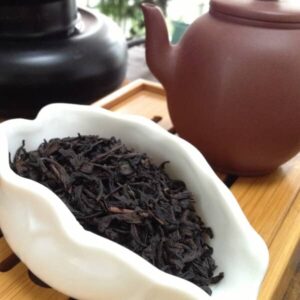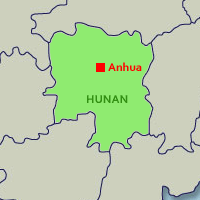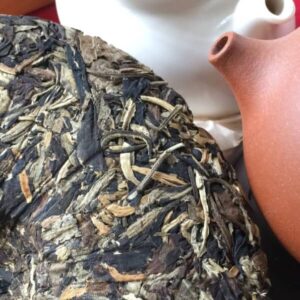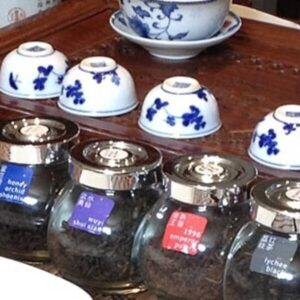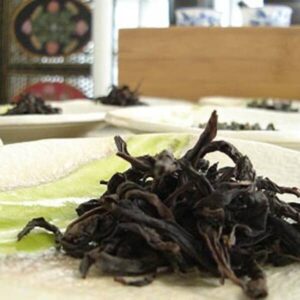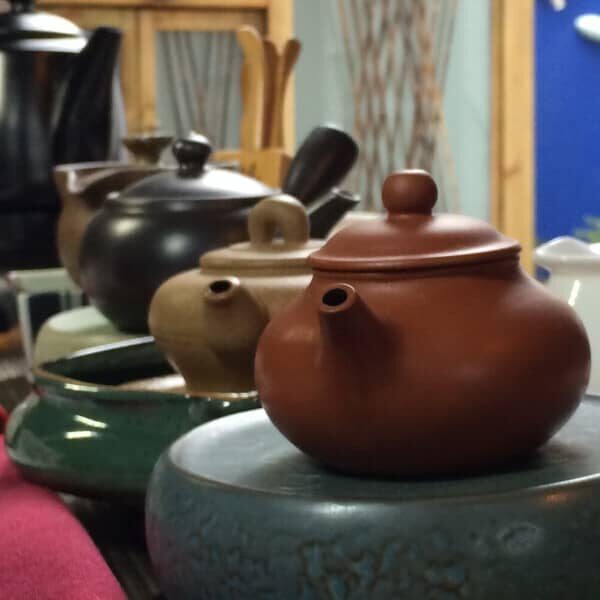World Of The Tea Sages
Red Teas
Red teas is a very interesting tea category. It comprises mainly of Pu Erh Teas (from Yunnan, South of China) and other similarly vintage teas from Central China. Red teas are post-oxidised and fermented (Do not let the word “fermentation” puts you off! Think of vintage red wines.)
Pu Erh tea is the jewel in the crown of the tea maker’s art: in fact it is so highly valued that it was used as currency 2,000 years ago and considered a worthy gift for Emperors.
Growing in China’s southwestern Yunnan province, stored in a warm, moisture-controlled environment to rest and age for months or even years, it’s broken down by slow microbial activity as it matures, acquiring a rich, darker colour and a mellow, earthy, umami and toasty flavour. Well-stored, vintaged Pu Erh teas should be sweet and smooth.
As well as the loose-leaf form, Pu Erh teas may be compressed into discs, bricks, ‘cakes’ or other shapes, which was originally so that they could be transported by horse caravan across the Himalayas. In village workshops these tea cakes are still formed under a series of stone weights, after being pressed flat and lightly steamed.
Each Pu Erh’s character is a result of not only provenance and crafting, but also how long and in what manner it was aged and the environment in which it is stored. This makes it a fascinating exploration, and like us you will follow your own individual journey with it. Our collection includes both minimally aged green ‘sheng’ Pu Erhs and ripened ‘shou’ Pu Erhs that have undergone accelerated fermentation. These are both first processed as a green tea, or ‘mao cha’, plucked, roasted, and left to dry in the sun. ‘Sheng’ leaves are then left alone to age, while ripened ‘shou’ Pu Erh is gathered into large warm piles, where it sits for months fermenting. The tea cultivar is Yunnan Big Leaf (大叶, ‘da ye‘), which has relatively large leaves growing on trees scattered here and there all over the mountain slopes of the region, rendering the harvest and transportation a difficult and time consuming process.
Pu Erh is known in Chinese as ‘Hei Cha’ (黑茶 meaning ‘black’ tea) owing to the dark sienna hue of its tea liquor. Chinese tea drinkers believe that it lowers blood cholesterol and prevents bad cholesterol (LDL) from forming in the arteries. They drink Pu Erh after a heavy meal to aid with digestion and even stimulate weight loss.
OUR RED TEAS
Green Pu Erhs, also known as ‘sheng’ Pu Erhs (生) or ‘raw’ Pu Erhs, are teas that have been naturally aged in carefully controlled, dry storage with suitable exposure to air. Think of it as a vintage white wine.
Typically they have been compressed into the form of round discs or bricks (a.k.a. ‘Cha Bing’ 茶饼 literally ‘tea cakes’). One might need to be patient and wait 3 to 5 years before brewing it. The Green Pu Erhs available at Teanamu are suitable for immediate consumption and for vintaging.
The base green tea leaf is picked and processed in much the same way as if green tea is going to be made, plucked, roasted and left to dry in the sun. But after that the leaves are skillfully encouraged to ferment and then they are made into compressed tea cakes and stored for vintaging. This produces the characteristic earthy, autumnal flavours and aromas.
Green Pu Erhs are herbaceous, smooth, sweet, bright, brisk, clean, soft and slightly woody. There is a hint of roastiness, and they can be frisky if young. They have a lingering finish. The colour of the liquor is bright clear, from pale wheat-yellow to amber depending on the age of the tea.
OUR GREEN PU ERH TEAS
‘Some grandpas make Pu Erhs for their grandsons to enjoy, but others want to drink it straightaway.’
Ripened Pu Erhs, also know as ‘shu’ Pu Erhs (熟普洱) or ‘cooked’ Pu Erhs, are teas that have undergone an accelerated vintaging process that involves the very careful, skilled control of storage temperature, humidity and light conditions. Processed as green tea or ‘mao cha’, plucked, roasted and dried under the sun, they are then gathered into large warm piles, where they sit for months fermenting, though sometimes the vintaging is done in just 20-40 days. The process is called ‘wet storage’ (渥堆, ‘wo dui’, literally ‘wet pile’).
Ripened Pu Erhs can be loose-leaf or compressed into round discs or bricks (a.k.a. ‘Cha Bing’ 茶饼 literally ‘tea cakes’). They can also be compressed into bamboo baskets or citrus peels. They are full bodied, with character and a lingering finish. The flavours are biscuity, fuearthy, woody, herbaceous, smooth, with a feel of the gentlemen’s club! The liquor is amber, burnt sienna like tinged copper.
The Chinese say, ‘Some grandpas make Pu Erhs for their grandsons to enjoy, but others want to drink it straightaway’. That is the dilemma, unfortunately – whether to enjoy the delicious brew right now or save it for further vintaging!
OUR RIPENED PU ERH TEAS
Red teas which are not grown in Yunnan and not harvest from the ‘Yunnan Big Leaf’ (大叶, ‘da ye’ tea cultivar cannot be called Pu Erhs. Rather, they are collectively called ‘Hei Cha’ (黑茶); literally ‘black tea’ – not to be confused with the black teas that we commonly known like the Darjeeling, Assam or Earl Grey.
These ‘Hei Cha’ are named much longer ago as “black” because the colour of the tea brew tend to darker in colour than the liquor from the common black teas.
OUR OTHER RED TEAS
Take part in the beautiful Chinese ‘gongfu cha’ tea ceremony while we shares with you our love of tea. You’ll discover how to appreciate the finer nuances of tea like a true connoisseur, yet in a light and relaxed setting.
You’ll be introduced to gorgeous teas with fascinating, evocative names like ‘snow buds’, ‘honey orchid phoenix’ and ‘dragon well’. The incredible range of flavours and aromas will amaze you.
~~ Whilst we patiently wait for the effective control of COVID-19 pandemic, our popular tea masterclasses are held online via our “Teas in the Clouds - Brew-along Masterclass”. ~~
OUR TEA MASTERCLASSES
Oxygen. Wonderful stuff.
But it also oxidises things: think iron rusting or copper coins going that weird green colour and the cut side of apple turning brown. Fresh tea leaves, like apples and other plants, have an enzyme called polyphenol oxidase. It is capable of oxidizing polyphenols which are very important molecules for protection against infections to giving them their pigments.
Polyphenol oxydase and the polyphenols themselves are stored in the plant’s cells, but when the cells are damaged, say by slicing an apple or dropping and bruising it, the cells are ruptured and the enzyme comes into contact with air. With the help of oxygen in the air, the polyphenol oxidase initiates a series of chemical reactions, transforming the polyphenols and eventually producing melanins (brown pigments).
The general name for this process is “enzymatic browning,” and the fabulous thing (for tea at least) is that it doesn’t just change the appearance of produce: it also alters flavour, scent, and nutritional value.
LET’S GO PICK SOME TEAS



